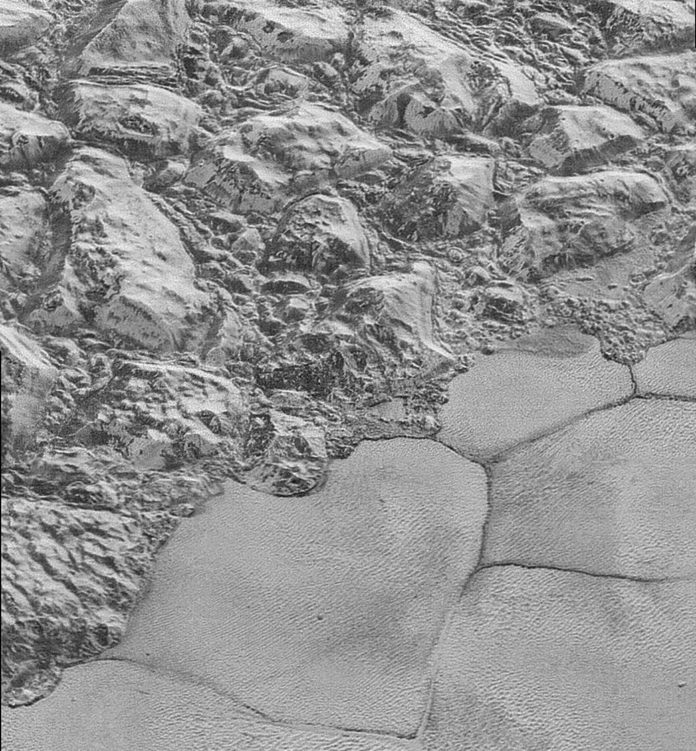NASA New Horizon’s scientists discovered dunes on Pluto near the mountains that encircle Pluto’s Sputnik Planitia plain. This discovery could be a sign of the dynamic dwarf planet’s geology and atmosphere, the winds of its thin and multi-layer atmosphere helping shape the landscape.
Researchers found these equitably separated edges on Pluto’s surface utilizing imagery from the 2015 flyby. The edges seem to have framed out of particles of methane ice as little as grains of sand, arranged into dunes by wind from the adjacent mountains.
Wind can make dunes through a procedure called eolian transport, where winds move sediment by skipping, bouncing, rolling and sliding particles over the ground. Although, the winds on Pluto aren’t strong enough to loft these grains off the ground. In any case, the procedure of sublimation – where ice transforms straight into gas, without going through the liquid phase – also lifts particles and could oust the sediment conveyed by winds to shape these methane-rich dunes.
Jeffery Moore, a research scientist at NASA’s Ames Research Center in Silicon Valley, and author on a June 1st paper that appeared in Science said, “The interesting, repeating patterns we see covering this part of Sputnik Planitia certainly resemble dunes. But they might also be sublimation erosion patterns, or due to a combination of particle movement and sublimation erosion.”
“The existence of young dune formations on Pluto tells us that all these complex systems are at play in this dynamic dwarf planet. The New Horizons data is showing a geologically vibrant surface, sparking continuous discussion among the scientific community. More research will help us pin down their origin. Whatever they are, it’s clear Pluto is one of the most amazing and complex objects in our solar system.”
